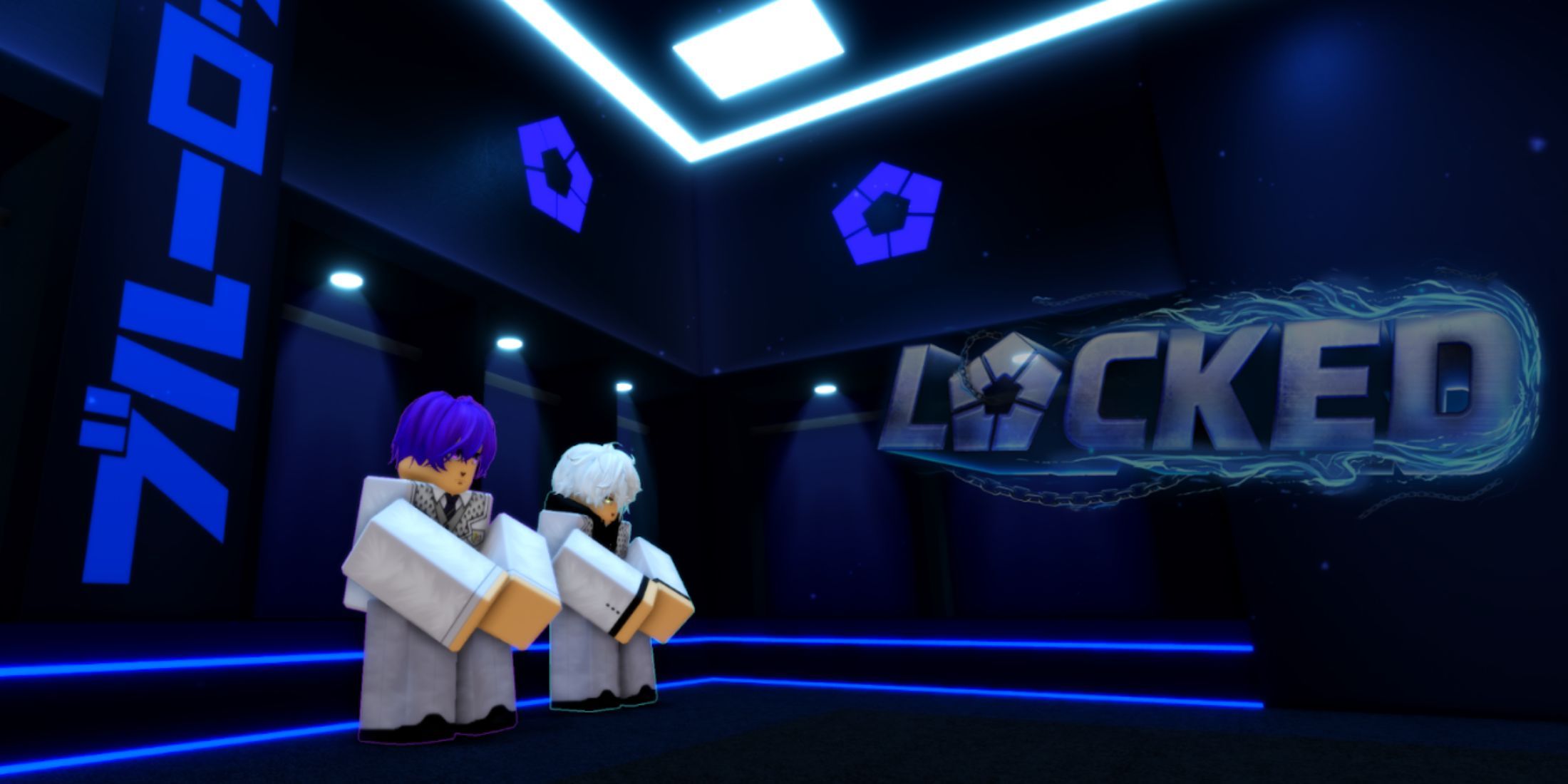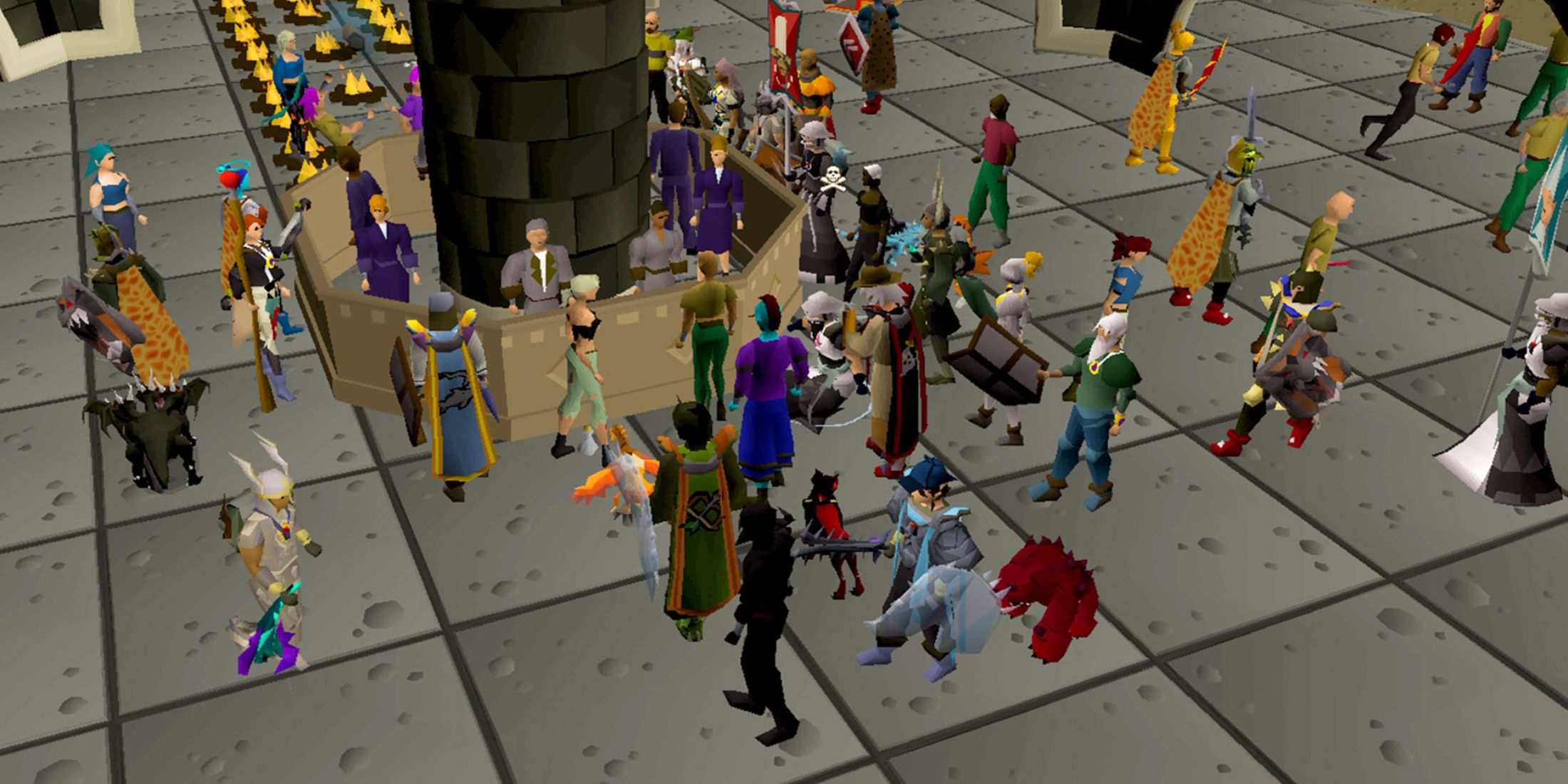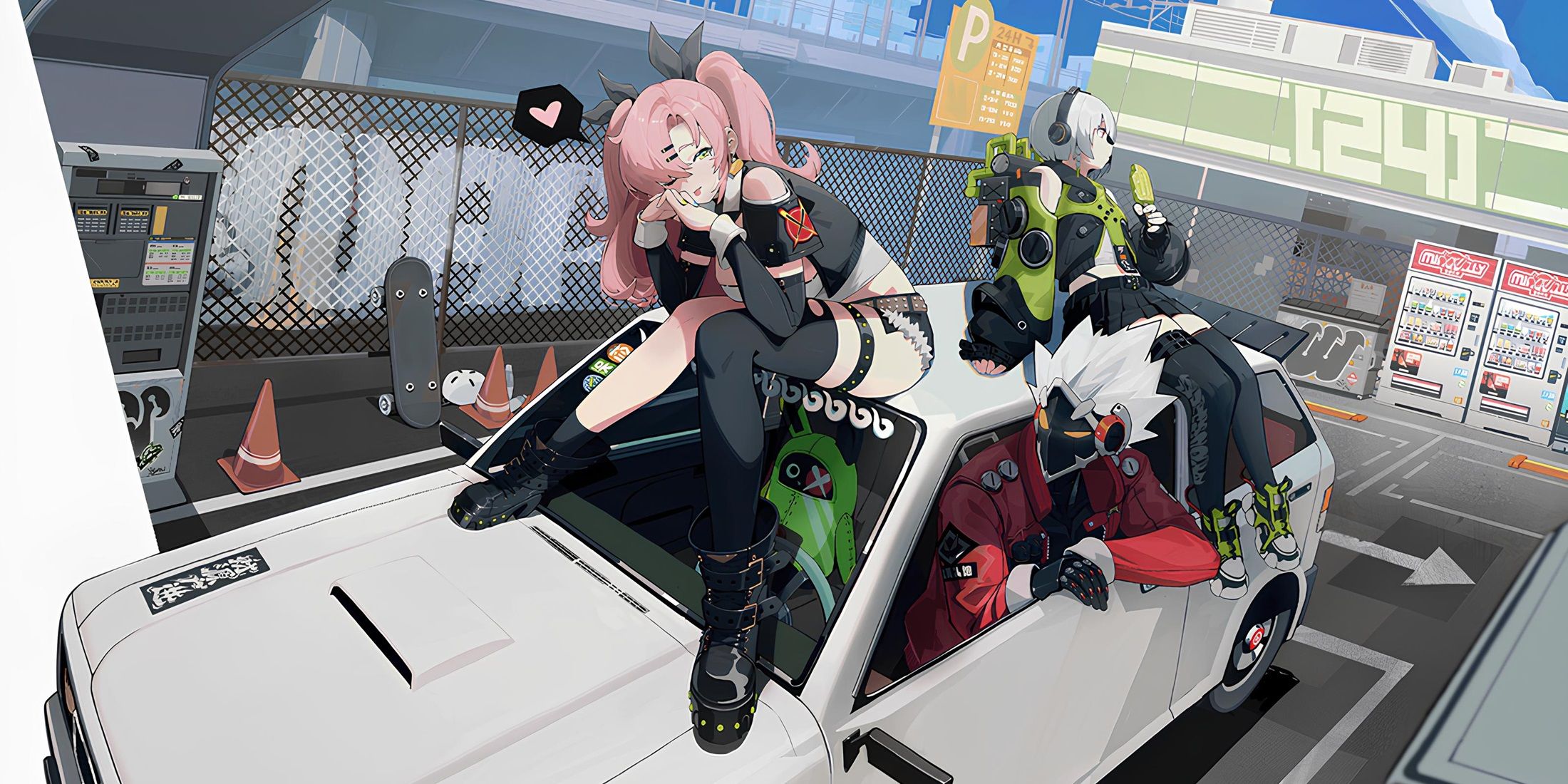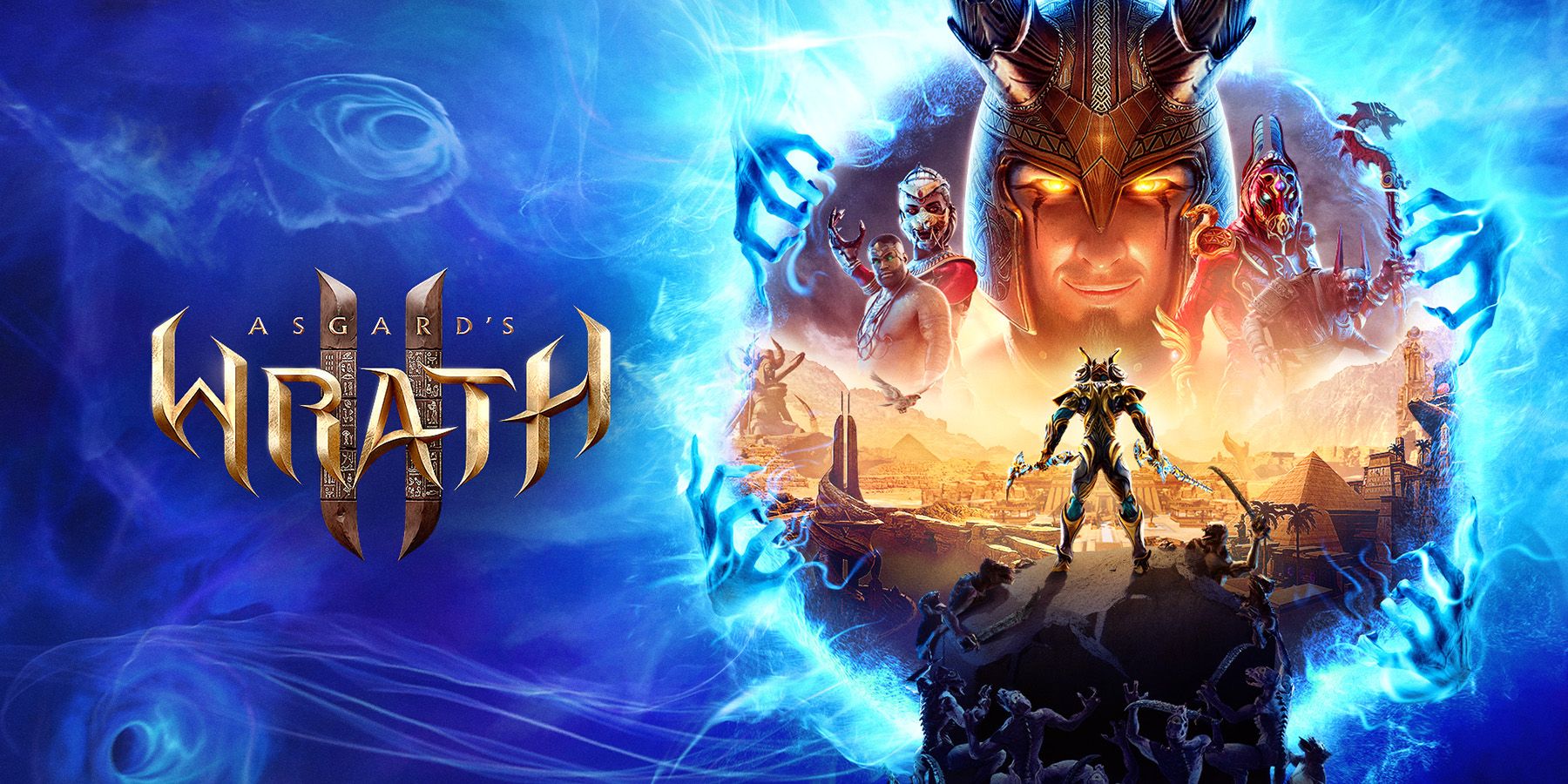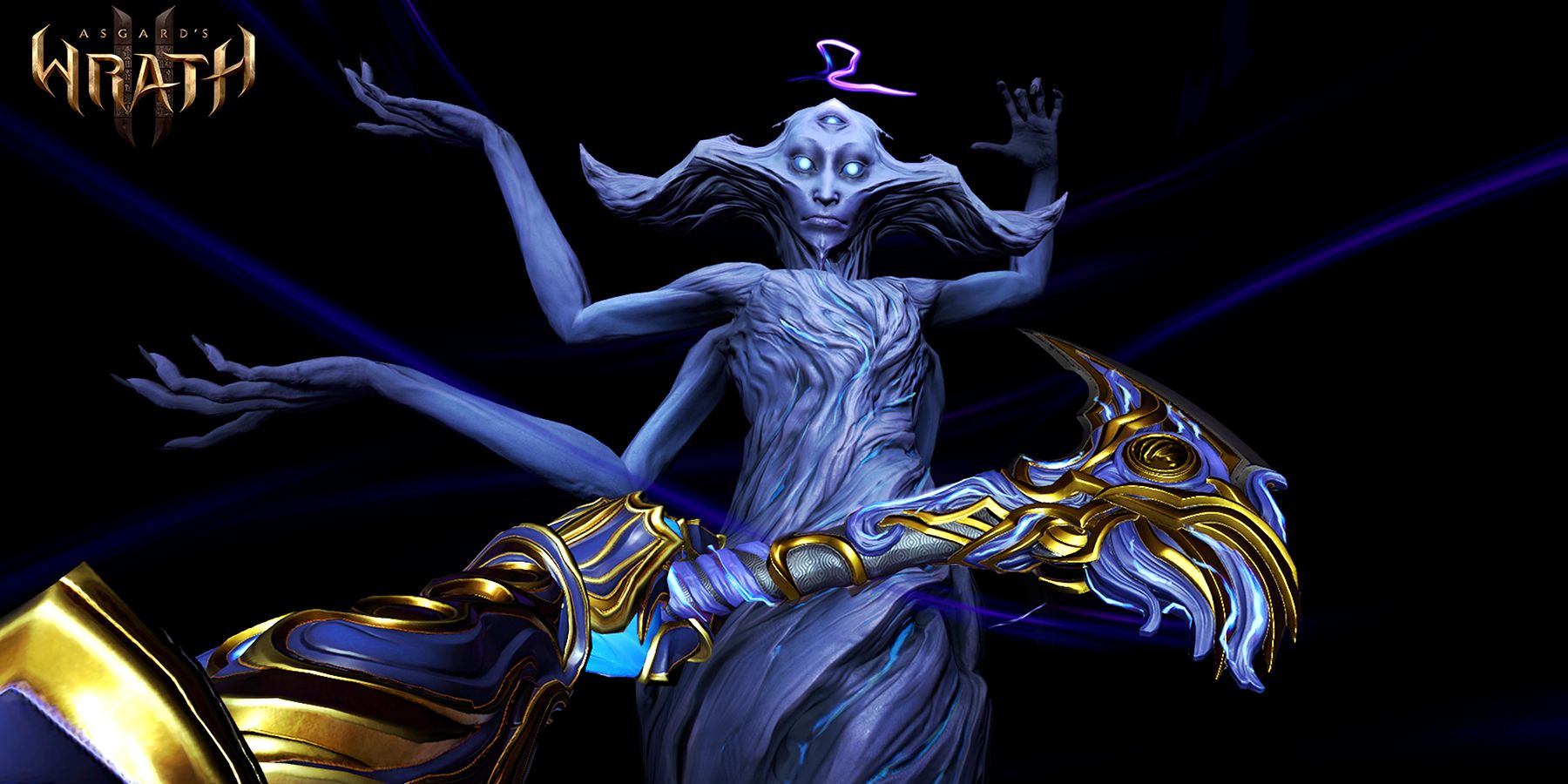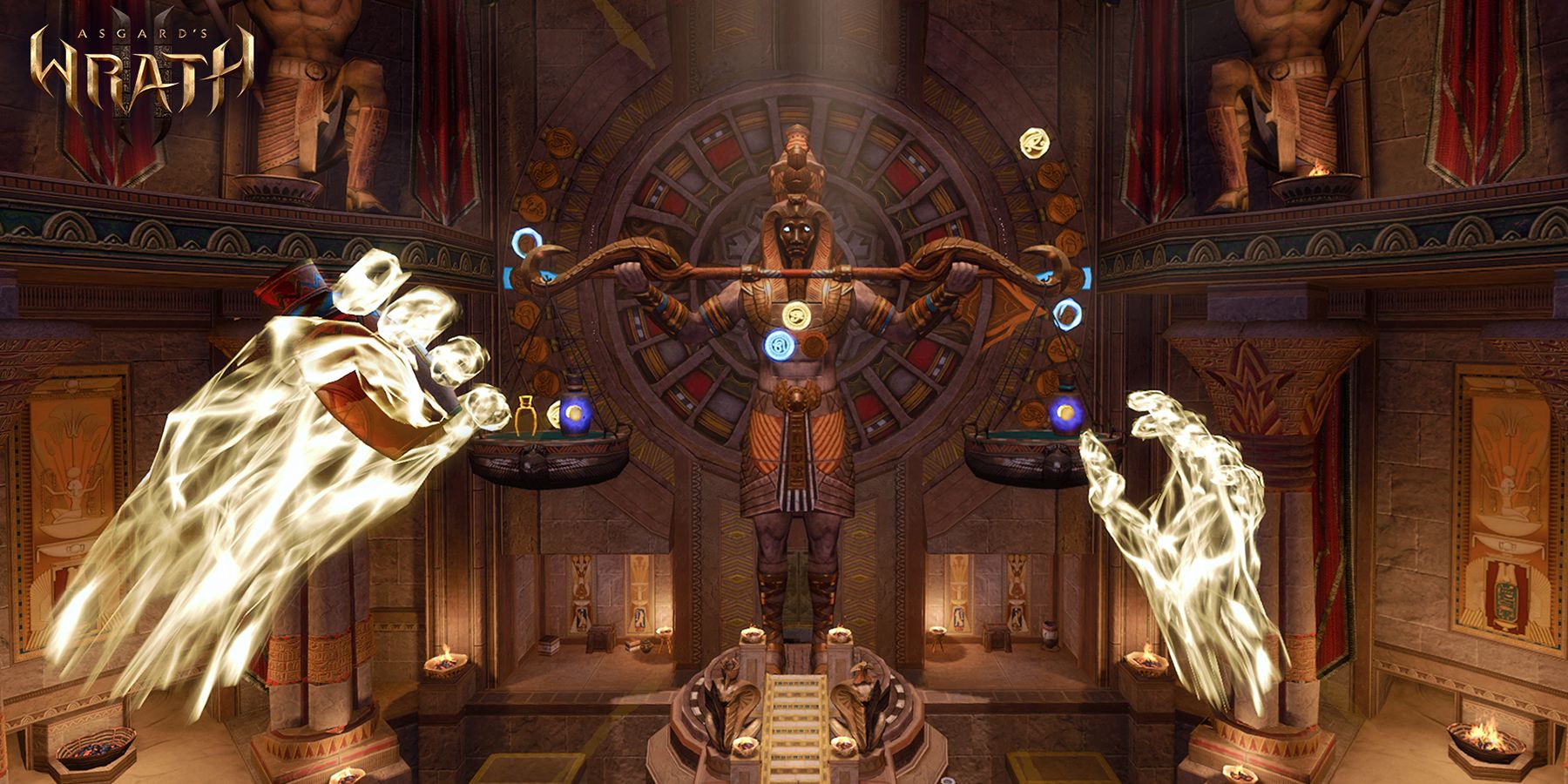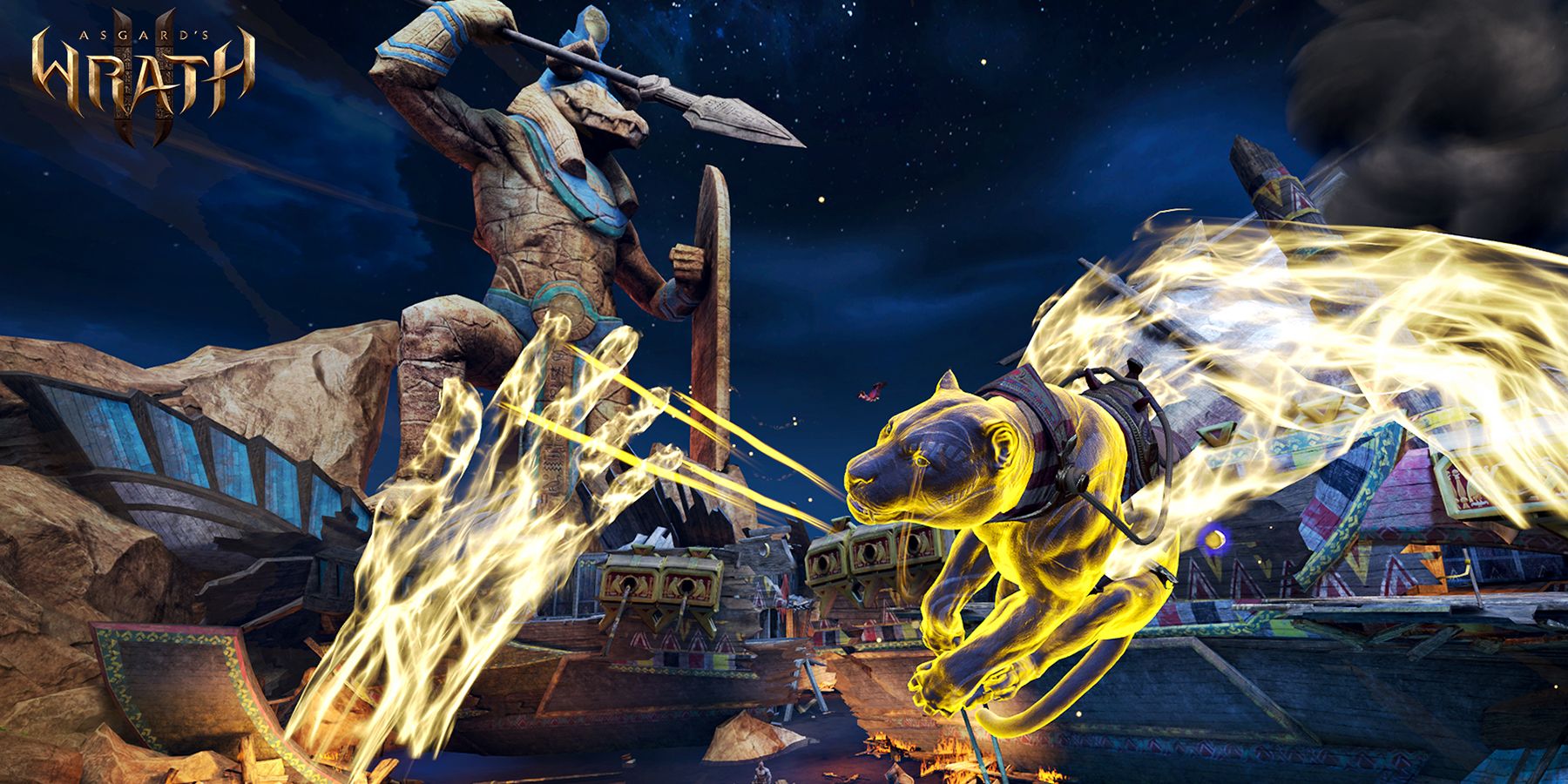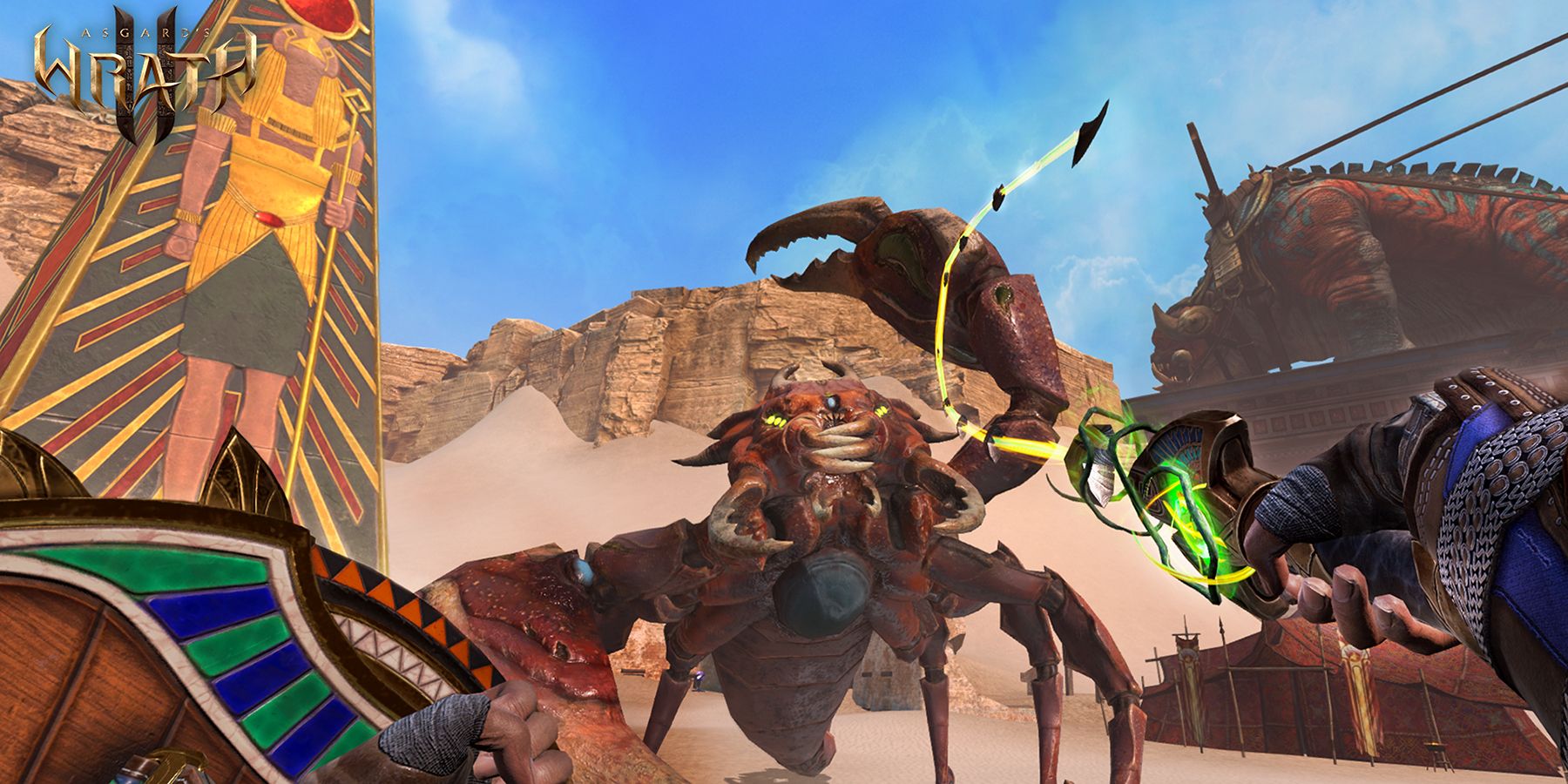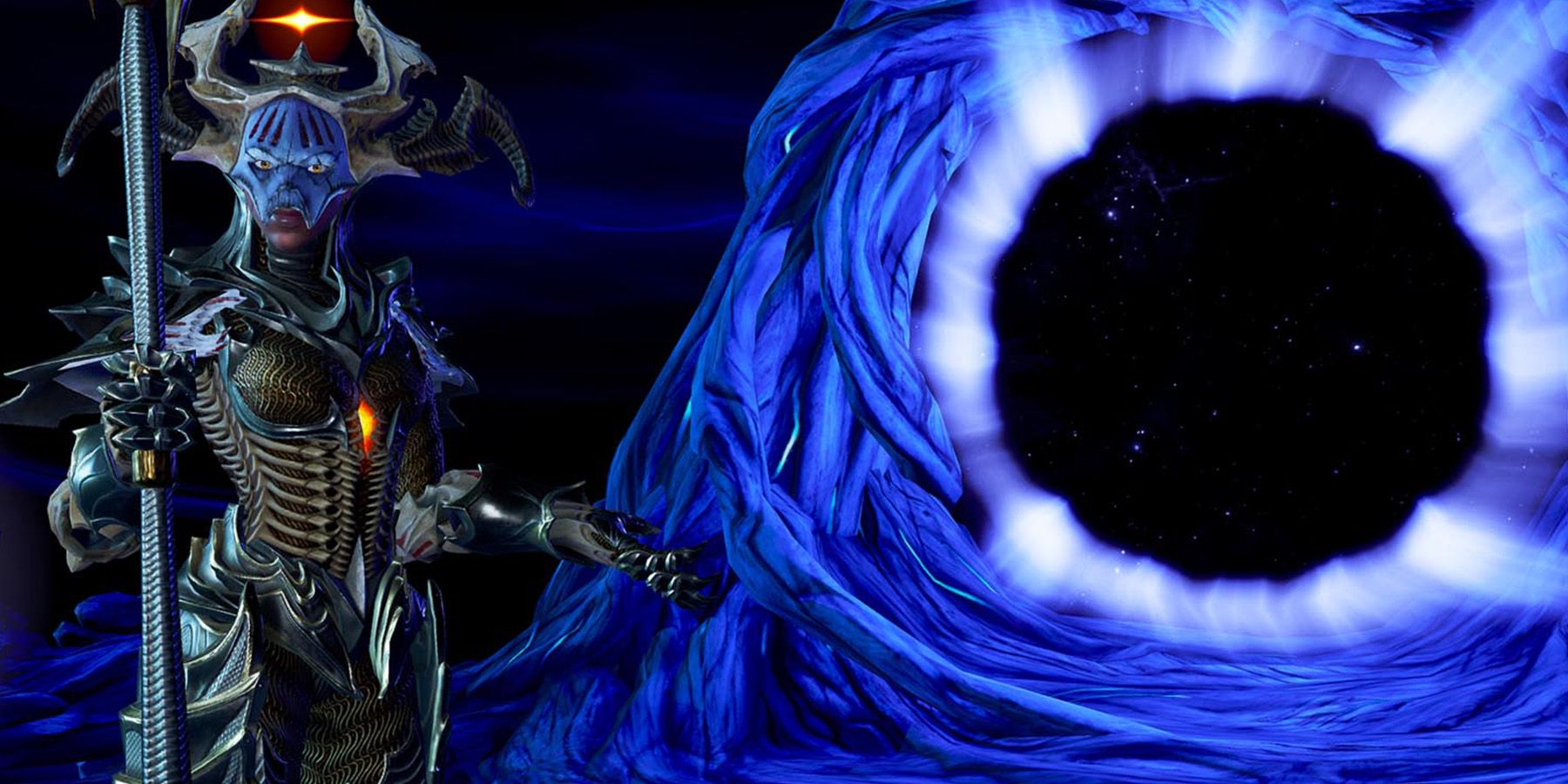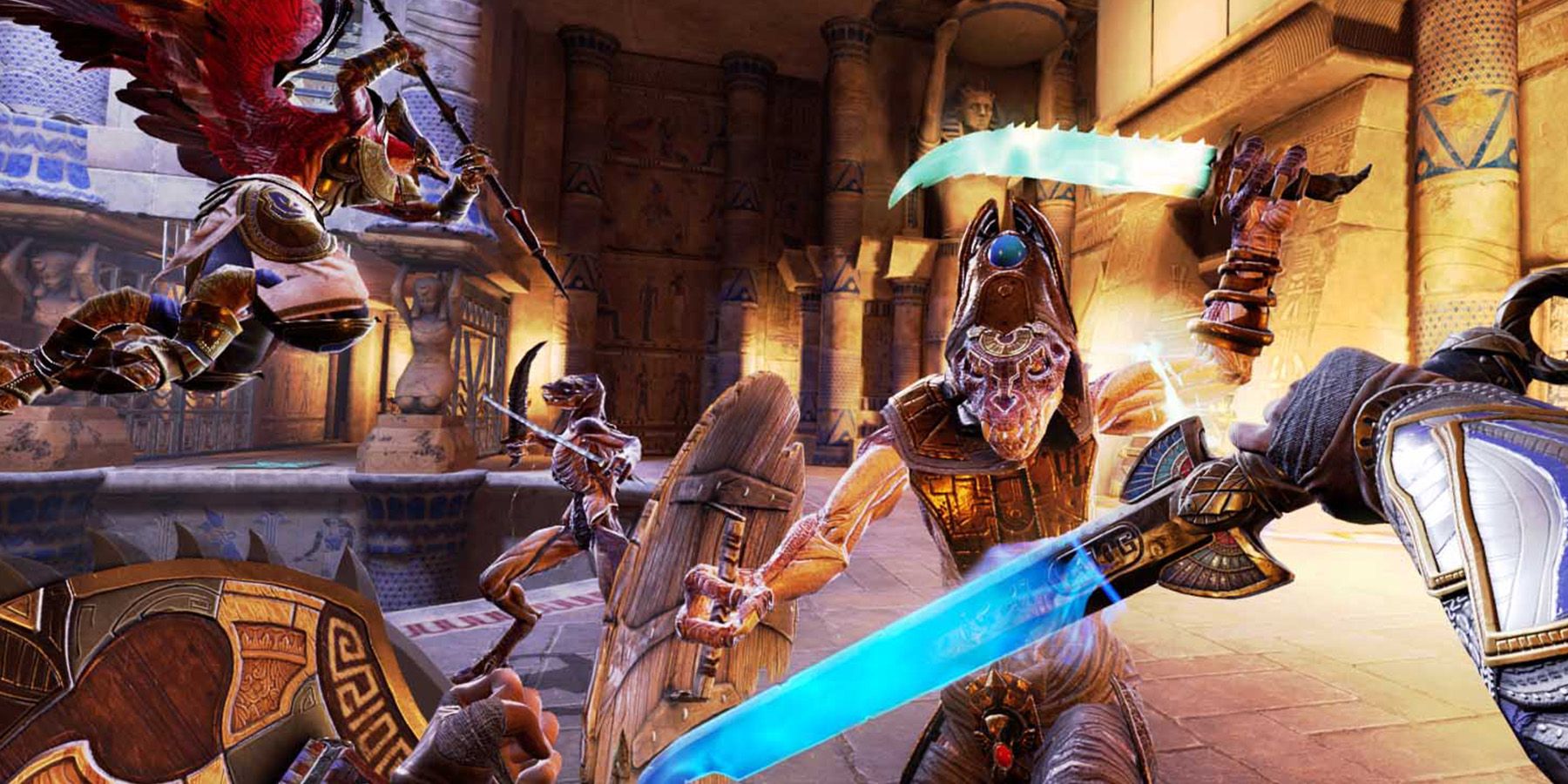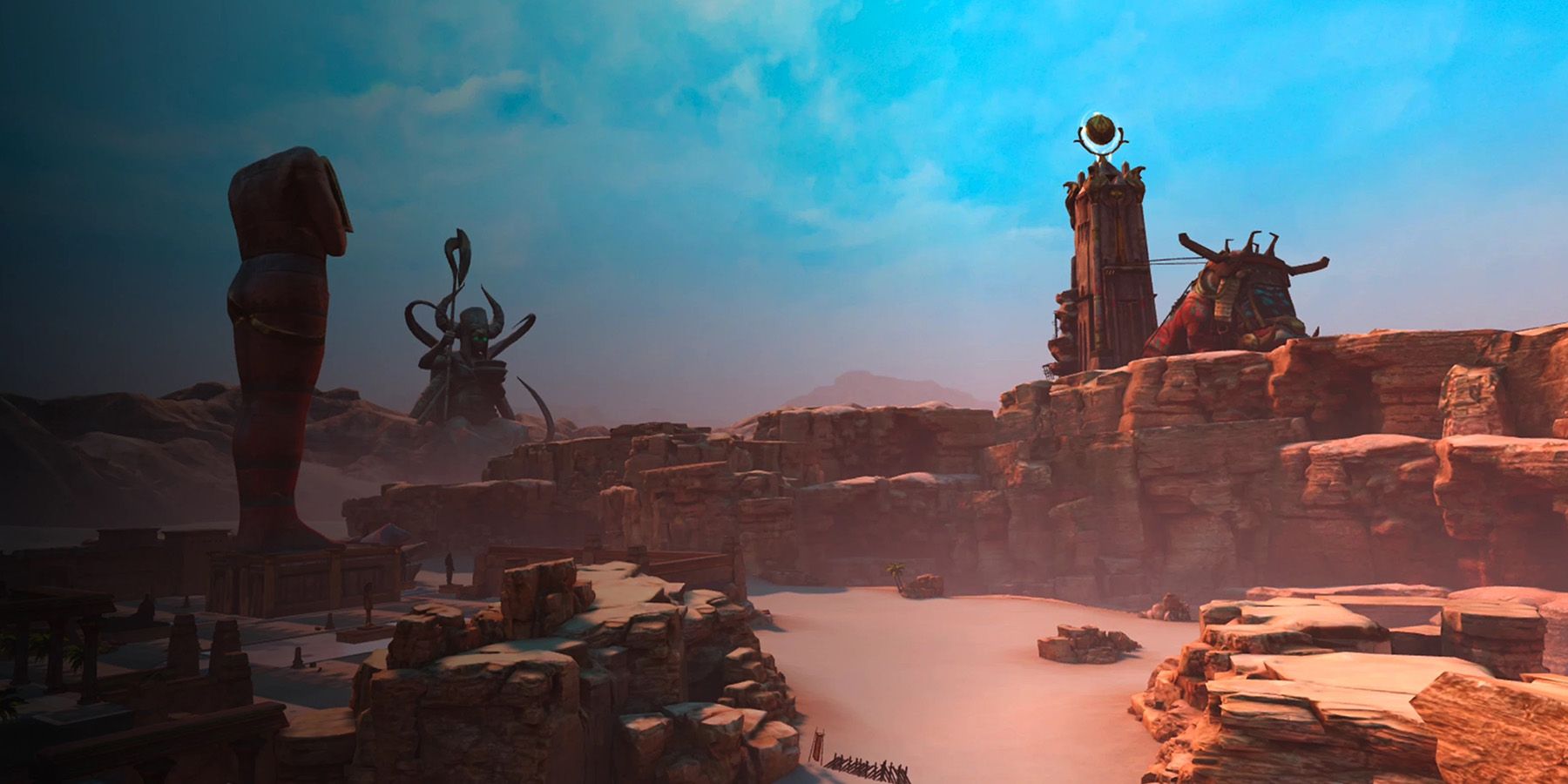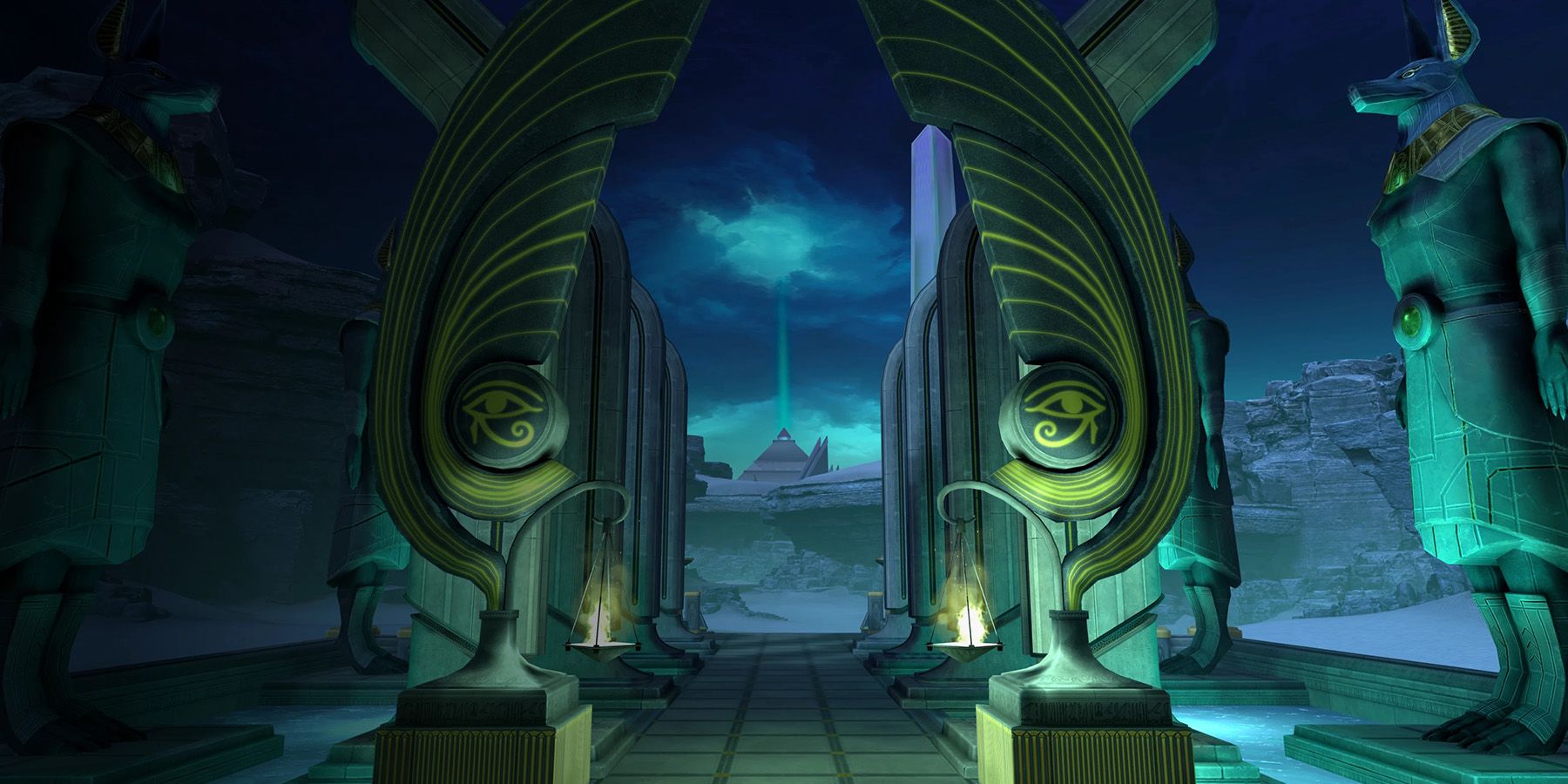Asgard's Wrath 2 absolutely stole the show when it was revealed at the Meta Quest Gaming Showcase earlier this year, giving gamers the world over a first look at one of the most ambitious and comprehensive VR RPGs to date. For years, one of the most common complaints among VR gamers is the lack of content on offer from VR titles, which tend to be entertaining for a handful of hours but are ultimately forgettable once the novelty wears off. Based on what has been shown, Sanzaru Games is gearing up to raise the bar entirely and set a new standard for VR games moving forward thanks to a staggering amount of content and systems to play around with.
In an exclusive interview with Game ZXC, Asgard's Wrath 2 Senior Game Producer Mari Kyle went in-depth about the game's endlessly replayable rogue-lite Uncharted Rifts mode that players can engage in alongside the sprawling 60-hour open-world core game. She also spoke about the game's asynchronous multiplayer component that allows players to help or hinder one another indirectly, as well as some extra details about the game's combat system, boss encounters, and more. The interview has been edited for brevity and clarity.
Q: The Uncharted Rifts features different room types like agility rooms and trap rooms. Can you talk about what players can expect in terms of gameplay in these rooms?
Kyle: This is probably one of my favorite parts of the game. I love roguelikes and rogue-lites, and this, in particular, is a rogue-lite. There are a ton of different ways that you'll find gameplay within the rogue-lite dungeons. We have agility rooms where your whole objective is to go through and time these jumps and grapple to locations really quickly in order to get through them.
We have trap rooms that are full of spinning saws and fire arrows that are shooting at you that do crazy damage, and things like swinging saws. So getting through all those is one of the room layouts. There are also a bunch of combat rooms where you'll find all kinds of setups like a billion bees or a bunch of desert raider-type warriors. We also have these timed challenge rooms as well, so you have to get through either combat or agility within a certain time limit.
There are all these different modular room types that you can encounter in the Rifts, and because it's procedurally generated, you can never exactly predict which one you're going to encounter or when. A lot of times, whenever I'm planning out some of my Uncharted Rifts runs, I have to be very strategic about making sure I’m ready for everything. This is really where players will be fully pushed to the limits and will test their skill sets from what they learned in the core game to see if they can apply it if it was like ten times that in the Uncharted Rifts.
That sounds like the definition of dungeon crawling and probably a ton of fun in VR.
Kyle: It's super fun in VR because it really feels like you're actually crawling through a dungeon. There are all these different types of environments like we have a cave layout where it feels like you're inside this cave environment and you're exploring these dilapidated ruins, and then we have a temple that's like an Egyptian temple that you're going through. (t really does show dungeon crawling in a whole new light whenever you're doing it in VR.
Q: How does procedural generation affect the environments of each run? Does each run have a consistent theme, or do they progress through a variety of biomes?
Kyle: The way the Uncharted Rifts are broken out is that, in each Rift, you basically go into a dungeon run. You start the run by going through a portal, and you pick your character. We have four different characters within the game, and you can actually use those loadouts in the Uncharted Rift as well. You pick your character loadout, whether it is a character that mostly uses a bow and arrow or an axe and a sword, and depending on what you pick, the dungeon layout changes or the type of rooms that you can get changes.
All players will get agility rooms and combat rooms, it's just that different players with different weapons and toolsets will have to do different things. So for example, Abraxas, the first playable mortal hero, has a grappling sword. Whenever you pick him, you'll find a lot of dungeon rooms that require that sword in order to move, whereas some of the other characters have other abilities that they’ll use.
You pick your character, you go into the Rift, and basically, each Rift has a number of these little levels that we call Threads. They could be like three to four, sometimes if you're really in deep there could be five, but we usually start you out with a smaller number. Each of those Threads follows the theme of the Rift.
If you think of a standard dungeon in another game, the dungeon has a theme, you go in there and there are all these different levels as you go through. Each Rift is its own dungeon, and then once you clear it, you go to the next Rift and then that is its own dungeon as well. You can just go through Rift after Rift for like 30-40 minutes or as long as you can survive, and each Rift does a different thing. Each Rift has its own theme, and it has a number of modules and room layouts it could choose from, and all of that is procedurally generated.
Q: I really like how the challenges change depending on what character the player uses. Were you trying to avoid cases where one character would become the meta pick for Uncharted Rifts?
Kyle: Yeah, we noticed early on during playtesting that if you pick a certain hero in the Rifts, there were some things that you could do really easily compared to another hero. We didn't want folks on the leaderboards to only play one hero because they knew they would get a high score on that one. We really made them switch up so that, depending on who you're playing, you'd still feel a challenge every time you go into it.
Since you can go into the Rifts anytime throughout the base game, it's a really nice way to get a feel for how to use a new character’s abilities once you unlock them, and then go back to the gameplay in the core game and kick ass.
Q: When it comes to the different heroes, how much can players customize them in terms of equipment or powers?
Kyle: So just like in normal rogue-lites, there's a ton of customization you can do while you're within your run, and then there's a little bit of stuff that you could do outside of it as well. When you're in your run, you'll pick up a ton of these things called Relics, which are things that will add a passive or non-passive boost to your weapons, whether they're elemental boosts so that your sword is on fire every time you're hitting something or it's passive and there's a percentage chance that you'll get more rewards after you kill this creature.
Those are the elements that’ll customize your run as you go through. We also have this feature called Revelations which are additional boosts that you can add on to your run as well. Another thing when you’re in the Rifts is the skill trees as well. Each time you start a new Rift run, you can gather skill points as you go and customize your skill tree so that you have those boosts for your run.
But in terms of character customization, we have a bunch of armor sets that players can choose from, a bunch of cool titles and stuff that you can have over your name, and a bunch of visual stuff that'll help you really personalize your character.
Q: How do titles work in Asgard’s Wrath 2? Do they signify certain accomplishments?
Kyle: Yeah, we have a bunch of titles. I've written a few myself that signify certain accomplishments that are going to be very fun and interesting for people to try to get. Some of them are achievements, others are milestones, and others can also be different things that you've completed in the game. There are a ton of different ways to collect them. A few of them we might even do as free post-launch things that you can grab for an event or something like that. But yeah, there'll be a lot of options for how to get these customizable, fun things to keep your player character unique.
Q: You mentioned players can customize their armor. Is that just cosmetic or does it also affect gameplay?
Kyle: Some of them may have gameplay effects. We have cosmetic ones that have the same base stats as some of the others, but we also have ones that will provide additional boosts and different percentages.
Q: You also mentioned skill trees in Uncharted Rifts. How does player decision-making tie into the skill trees? Will they be filling out the tree completely, or is it more about choosing a particular path?
Kyle: You're mostly picking a path, but it depends. If you end up surviving in the Rifts for a really, really long time, then you'll have a ton of skill points and you can put them in everything. Basically, for each hero, a whole skill tree is open to you. If you had the skill points to spare, you could put them into those different areas wherever you'd like.
I usually like to specialize in the axe skill tree because I love and definitely overuse my axe. So for me, I'll always fully max out that skill tree line, and then I'll go and expand after that whenever I’ve survived long enough to acquire more skill points.
Q: Are there any interesting axe skills that come to mind that really change things up when you unlock them?
Kyle: Oh my gosh, so you have this boomerang axe that you throw and you can swing back – by the way, the amount of arm workout I've gotten from just doing that over and over is so cool – but for this, there's a skill tree ability where when you throw it, there's an afterimage of the axe that follows it, so you can throw it a billion times, and it creates all these damage trails that enemies can walk into and take damage from.
Pro tip: If you have a very fast hand, whenever you enter into one of the boss arenas, you can just do that a bunch so it’s like a web.
Q: As you mentioned, you can get a bit of an arm workout from this. With Asgard’s Wrath 2’s physics-based combat, do you deal more damage if you swing harder or things like that?
Kyle: We have a visual indicator of whether or not you're swinging hard enough to do a ton of damage so that as you're playing, you'll be able to tell like, “Oh, am I not hitting it hard enough? Or am I actually doing a ton?” We also take information based on how fast your controller is going when you're swinging it down, and also the space and the distance it’s covering, where it's located, and where you're swinging from.
For example, if I'm fighting someone up close and I'm just swinging from a tiny distance, it's not going to do a ton of damage, but if I'm really slashing in a wide arc then it's going to do a ton of damage. It’s very finely tuned measurements of how fast you're going and that really translates into the actions you're doing.
Q: How does the meta progression work in the Uncharted Rifts? How do players grow in power between runs?
Kyle: It comes in the form of unlocking those new Revelations that you get. You can unlock a ton of Revelations as you go. Each time you will unlock a new subset, but also you'll get this form of currency within the run itself that you can use to purchase those Revelations. None of this requires real-life money: it’s just loot in the game that you spend on these Revelations and those are really what upgrade you between your runs.
One of my favorites is a Revelation that lets you get what’s called Divine Protection, which is an additional layer of health and armor. There are also ones where every time you enter a combat room, you heal a percentage of your health if it's lower. So there are a bunch of these and they’re in tiers, so as you purchase the higher tiers, they'll have a stronger effect, which is what helps get you through those later Rifts in the game that are very difficult to win.
Also, the story of the Uncharted Rifts is that you're closing these Rifts in reality as you go through, and as you close more Rifts, you actually unlock a bunch of things. You’ll unlock either new Rift modules that you haven't seen yet, or you'll unlock art pieces and all kinds of other stuff.
Q: Players can bring items from the Uncharted Rifts back into the core game. What kinds of things can they bring back, and what does it do for them?
Kyle: We have a pretty fun crafting system. Whenever you're in the core game, you'll encounter a lot of resources that you can harvest. But let’s say you either don't want to do a ton of exploring or maybe you're missing something in particular. You can go into the Uncharted Rffs and specifically loot the things that you need to build resources, armor, and stuff in the base game.
For example, if you are lacking copper in the main questline, you can go into the Rifts, and you'll probably find a bunch of copper just lying around. Then, you can send those back to your player character in the core game through these things called Dimensional Wells.
However, if you end up dying before you're able to send your stuff back into the Dimensional Wells, you'll lose them forever. It's good to use them every time you see them, that way you can make sure that you save something from your Rift run in case you die.
Q: Earlier we talked a little about how one hero uses an axe. How do the other hero loadouts affect the player’s experience and their approach to combat?
Kyle: We have designed a bunch of our player characters so that you can really focus on specific playstyles. Some characters are more focused on ranged attacks, and we'll have characters where their whole skill tree ability set, their weapons, all of it lends itself to a playstyle that's completely different from Abraxas – a melee-heavy character – and from each other.
As you're going through, you’ll feel a lot of variety in the way that you're interacting with the world, and similarly, each of these heroes has enemies that are designed specifically to counter those playstyles, too. You'll find in Abraxas’ saga – which is the first mortal hero – a lot of his enemies will come up really close to rush you and do a bunch of melee attacks because it's a melee character, but you'll see with the other ranged-focused characters that enemies are much more clever about closing the range and hitting you from really far.
We worked really hard on the enemy AI so that they'll counter you based on which characters you're playing, what skill sets you have, and stuff like that as well.
Q: Speaking of the enemies, how are enemy encounters arranged? Will players face completely random enemies, or will they be tied to the theme of each biome or room in the Uncharted Rifts?
Kyle: So in the core game, they're pretty tied to the biome that you're in. There are some that are scattered all over and can appear in different areas, but for the most part, each biome has its own set of enemies that you'll encounter and wildlife as well. Some wildlife you won't see on one map, but there are some that you'll see all over the place. That's kind of how the enemies are disbursed in the core game.
In the Rift, though, because it's outside the core reality, the rules of biomes in the core game don't apply to the Rift. You might be in a combat room with desert raiders, who never interact with this other type of minion in the core game, and yet in the Rifts, they're both kicking your ass right next to each other.
It’s a super big challenge because you might be really accustomed to the desert raider because they're all over the place, but now you have to fight with a desert raider and this other character that's from much later in the game, and you have to try to figure out how to balance those dynamics. So the Rift is a little bit more of a wildcard in terms of what enemies show up and where.
Q: The Uncharted Rifts each end with difficult encounters like boss fights. Can you talk about what challenges players might face in the end?
Kyle: Oh man, it's super fun! So the way that each Rift ends is we have this thing called a Divine Trial. The Divine Trials can sometimes be this big combat setup where there are 20 enemies all popping in at different times. It's a rush of enemies that are coming in one after another, but you can fight them multiple at a time, and these big combat scenarios are all at different levels of height too, so you can grapple up to one area and fight a few of them and then you have to grapple down. It's really to test how one person can handle this horde of enemies, and the enemies themselves also have different relics and abilities and enemy types.
We also have the Divine Trials which are massive boss fights with massive creatures. These are more one-on-one fights, but with a scorpion that's like 60 feet tall or something. Those ones are really tricky, because you'll encounter these bosses in the core game, they're bosses for big quests, and now you have to fight them in the Uncharted Rifts after you've just fought a ton of other characters leading up to it.
It really challenges how much you can survive and strategize your fights. Those are the types of bosses you'll encounter in the Uncharted Rifts.
Q: RPG boss fights in VR sound both exciting and difficult to execute. How did you approach the game's boss encounters with VR gameplay in mind? Will players be targeting weak points or avoiding area damage?
Kyle: All the enemies in the game except maybe a few very advanced ones have weak points, including the bosses. Whenever you fight massive creatures like the Deathstalker, which is a big scorpion, it has a bunch of weak points, and it also has a bunch of grapple locations. Whenever it raises its claw up, you can grab its claw down so it gets stuck, and then you go in and hit those weak points on its claw or on its head or different areas.
It also has this massive stinger that you can grapple toward you, and then pull the stinger down on its own head whenever it's low enough health. It also has a bunch of other attacks that are pretty deadly. It has a tail-swinging attack you have to jump over in order to survive, and it has a bunch of poison droplets that it'll sprinkle about in the air.
All these bosses have a unique combination of attacks that really forces you to think about your physical space in VR and how you're going to react to these, dodge them, and move. It's very physical and engaging, especially if you're used to monster boss fights in 2D console games. It's very different.
Q: Can you talk about the asynchronous multiplayer aspect of Uncharted Rifts? How do players indirectly engage with one another, and what are the benefits of participating in the system?
Kyle: Since our studio is owned by Meta, which is inherently a social company, we wanted to figure out how we can make it feel like you had the presence of other players within your own game, whether it was in the core gameplay or in the Uncharted Rifts.
I was talking earlier about character customization and a bunch of visual stuff, and you might have been wondering, “Well, what's the point of that? Where is that shown?” and that's really shown in the player avatars that you can leave behind in the world. So in both the core game and in the Uncharted Rifts, you'll see specters of other players with the same loadout and the same character customization with their title and all that stuff, and they interact with your game depending on which mode you're in.
When you're in the core game, you can leave behind your player character avatar in a certain location and that can point to hidden treasure or point to a monster den where there's a bunch of combat stuff. It can also have recorded emotes as well so that you can really put yourself into this character. You'll have your weapon loadout and your customization elements, and it's a really great way to make the world feel like it's coming alive with all these other characters without having synchronous social co-op mechanics.
In the Uncharted Rifts, though, it's a little bit more engaged. As you're playing through the Uncharted Riffs, whenever you die, you can choose to leave behind either a friendly soul we call the Divine Soul or a very evil soul called the Dread Soul. Once you finish your Rifts, those will go into this massive random database that prioritizes your friends over strangers – but also can grab from anywhere – and those specters will show up in other people's Rifts either as Divine Souls that they could pull out and fight alongside them like companions or as mini-bosses. These Dread Souls will have the same weapon loadout.
So if I was playing with an axe, it'd have that axe. They're much more aggressive than the AI for normal enemies because we wanted them to feel like this player kicked your ass, or you kicked this player’s ass. They also have the name of the person who left it behind, so you can get bragging rights if you really toppled them. Whenever you do leave one behind, if you come back later on in the game, you'll get a notification that so-and-so defeated your Dread Soul or your Divine Soul helped this person through a Rift or something.
It's a really good way to feel like your friends are there with you, even though it's inherently a solo game. And yeah, the Divine Souls will fight alongside you just like the companions in the core game world. They have their own abilities. skill sets, loadouts and stuff like that, so it's very fun to interact with these creatures.
Q: Besides the basic weapon types like swords and bows, are there any other interesting abilities or tools that players can use in combat?
Kyle: Oh, man, there's so many. The grapple is a really fun one. It's such a good way to maneuver around a space whenever you have a bunch of enemies that are attacking at one time, and maybe there's one that's right next to you that's really about to hit you, and you can just pull away to another enemy and speed around the space which is really fun once you get the hang of it.
There are also these special moves that you can do, too, after you've unlocked a certain amount of skill tree points. For example, there's one where you can throw your shield down, then you can raise it up with your grappled sword, and it'll rain down and hit a bunch of characters. Each of the heroes has their own special moves that they have, I think three or so each, that really change up the combat scenario, and they just make it visually stunning.
Something that’s new to Asgard’s Wrath 2 is mounts, so you can be on your mount – and this is in the core game, not in the Uncharted Rifts – and then grapple an enemy off of your mount and then attack it. It's super cool to do mounted combat when you’re playing.
[END]
Asgard's Wrath 2 is set to release in Winter 2023 for Meta Quest 2 and Meta Quest 3.

